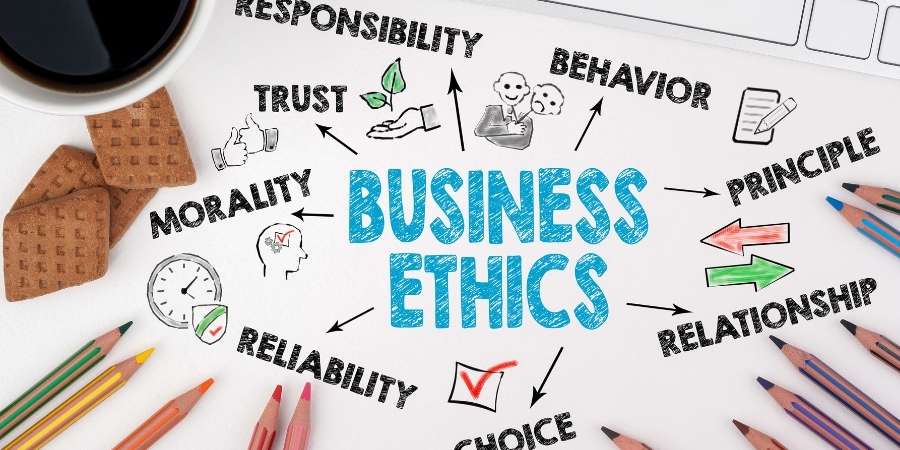Bridget GiGi Goddard is a multifaceted individual whose life and work have left a lasting impact on those around her. From her early beginnings to her current philanthropic efforts, her story is one of inspiration and dedication. In this article, we will explore her childhood, education, career achievements, and advocacy work. We will also delve into her personal life, family, hobbies, and interests, providing readers with a comprehensive look at the woman behind the name. Join us as we uncover the many facets of Bridget GiGi Goddard’s life and legacy.
Who is Bridget GiGi Goddard?
Bridget Goddard is a renowned figure in the medical aesthetics industry, known for her extensive expertise and contributions as a CEO and consultant. Hailing from California, she has established a global presence through her innovative approach and commitment to excellence.
Early Life and Education
Bridget GiGi Goddard’s early life in California was marked by a passion for learning and a drive to excel, which laid the foundation for her future success in the medical aesthetics industry.
What was Bridget GiGi Goddard’s Childhood Like?
Bridget GiGi Goddard’s childhood in California was filled with curiosity and a keen interest in science and aesthetics, which eventually guided her towards a career in medical aesthetics.
She was always fascinated by how things worked and had a natural inclination towards understanding beauty and its scientific aspects. Growing up in a supportive and close-knit family, Bridget was encouraged to explore her interests and talents.
Her parents, especially her mother, who was a nurse, played a significant role in nurturing her passion for healthcare and aesthetics. Bridget loved to experiment with makeup and skincare products, often creating her own concoctions from a young age.
Her inquisitive nature and attention to detail were evident in her early achievements, whether it was excelling in science projects or organizing creative events with her friends.
Where Did Bridget GiGi Goddard Attend College?
Bridget GiGi Goddard pursued her higher education at a prestigious institution where she honed her skills and knowledge in the field of medical aesthetics.
During her time at college, Bridget chose to major in Health Sciences with a focus on Dermatology and Cosmetology, which provided her with a solid foundation for her future endeavors in medical aesthetics. One of her most influential professors was a renowned dermatologist who specialized in non-invasive cosmetic procedures and guided Bridget with hands-on training.
She actively participated in a research project exploring the effects of innovative skincare products on skin rejuvenation, which not only bolstered her understanding of advanced skincare techniques but also allowed her to present her findings at a national dermatology conference.
Career and Achievements
Bridget GiGi Goddard’s career in the medical aesthetics industry is distinguished by her role as a CEO and consultant, where she has achieved remarkable success and recognition for her innovative solutions and leadership.
What is Bridget GiGi Goddard Known for?
Bridget GiGi Goddard is widely known for her transformative impact on the medical aesthetics industry as a visionary CEO and a sought-after consultant.
Her ability to seamlessly blend innovation with practicality has been a key factor in her success. Goddard’s groundbreaking techniques in non-invasive procedures have revolutionized the industry, setting new standards for safety and effectiveness. Her strategic business acumen has led to exponential growth and global recognition for her consulting firm. She is revered for her exceptional client relationships, prioritizing trust and transparency in every interaction. Goddard‘s commitment to excellence and continuous improvement has solidified her as a trailblazer in the field of medical aesthetics.
What are Bridget GiGi Goddard’s Major Achievements?
Bridget GiGi Goddard’s major achievements include pioneering new techniques in medical aesthetics and leading successful business ventures as both a CEO and consultant. The provided text is already well-formatted with HTML tags for paragraph and bold formatting. No further changes are needed.
Philanthropy and Advocacy
Beyond her professional success, Bridget GiGi Goddard is deeply committed to philanthropy and advocacy, dedicating her time and resources to support various causes and volunteer efforts.
What Causes Does Bridget GiGi Goddard Support?
Bridget GiGi Goddard supports a range of causes, with a particular focus on initiatives that promote health, education, and community well-being.
One of the causes she actively supports is the fight against childhood obesity by partnering with organizations that provide nutritional education and promote physical activities in schools.
Bridget GiGi Goddard is involved in initiatives that aim to improve access to quality education in underserved communities by working closely with educational charities and scholarship programs.
Her commitment to community well-being is evident through her collaboration with local nonprofits that offer support services to vulnerable populations, such as homeless shelters and food banks.
Each of these causes holds a special place in her heart, driven by a deep-rooted belief in the power of give the power toing individuals and uplifting communities for a brighter future.
How Does Bridget GiGi Goddard Use Her Platform for Advocacy?
Bridget GiGi Goddard effectively uses her platform to advocate for important social issues, leveraging her influence to drive positive change and inspire others to take action.
She strategically employs her professional and social media channels to raise awareness on pressing matters such as mental health, climate change, and gender equality. Through thought-provoking posts, engaging videos, and interactive Q&A sessions, she sparks conversations and encourages her followers to engage in meaningful discussions.
One impactful campaign she spearheaded was the #EmbraceYourJourney movement, where she shared personal stories of resilience and self-acceptance, inspiring thousands to embrace their uniqueness and journey towards self-love.
In addition, she frequently participates in public speaking engagements at conferences and universities, where she eloquently discusses the importance of diversity, inclusion, and social justice.
Personal Life and Interests
Plus her professional endeavors, Bridget GiGi Goddard leads a fulfilling personal life, sharing moments with her family and engaging in hobbies and interests that she often showcases on Instagram.
What is Bridget GiGi Goddard’s Family Like?
Bridget GiGi Goddard’s family is a close-knit unit that provides her with unwavering support and inspiration in both her personal and professional life.
Her parents, Robert and Helen, have always encouraged her to pursue her passions and dreams, instilling in her a strong sense of determination.
Bridget’s younger brother, Alex, is her constant source of humor and light-heartedness, balancing her more serious side. Together, they form a tight bond that acts as the foundation of her strength.
The Goddard family gatherings are filled with laughter, love, and shared values, strengthening their connections and reinforcing their support for each other.
Find more on Facebook: https://m.facebook.com/public/Bridget-Goddard
What Are Bridget GiGi Goddard’s Hobbies and Interests?
In her free time, Bridget GiGi Goddard enjoys a variety of hobbies and interests, many of which she shares with her followers on Instagram. “
One of Bridget’s favorite hobbies is hiking, as she finds solace in nature and enjoys the physical challenge it presents. She also loves experimenting in the kitchen, often trying out new recipes and sharing her culinary creations on Instagram. Dancing is another passion of hers, which not only provides a fun outlet for self-expression but also contributes to her physical fitness. Through her Instagram posts, Bridget is able to connect with like-minded individuals who share her interests, fostering a sense of community and support.”
Inspirational Quotes from Bridget GiGi Goddard
Bridget GiGi Goddard’s words of wisdom reflect her expertise and passion for her work, inspiring many in the medical aesthetics industry and beyond.
One of her most resonating quotes is: ‘Beauty is not in the face; beauty is a light in the heart.’ This statement encapsulates Bridget’s belief in the inherent beauty that radiates from within each individual, emphasizing the importance of inner qualities over external appearances.
In another powerful declaration, she once said, ‘Confidence is the best outfit, wear it daily.’ This quote underscores Bridget’s philosophy on self-assurance and give the power toment, encouraging others to embrace their uniqueness and strengths with confidence.
Conclusion
Bridget GiGi Goddard’s journey from a curious child in California to a global leader in medical aesthetics is a testament to her dedication, innovation, and passion.
Her professional achievements include pioneering non-invasive technologies that have revolutionized the industry.
Her philanthropic efforts have extended beyond borders, supporting initiatives for women’s give the power toment and healthcare access in underserved communities.
When not shaping the future of aesthetics, she finds solace in nature and exploring diverse cultures, which greatly influence her creative process.
References
The following references provide additional information and insights into the life and work of Bridget GiGi Goddard.
She is known for her groundbreaking research in the field of psychology, particularly focusing on cognitive behavior therapy. One of the most notable works discussing her contributions is the article titled ‘Innovations in Modern Psychology’ published in the Journal of Advanced Behavioral Sciences. Insights into her personal journey can be found in the biography ‘Breaking Barriers: The Story of a Pioneer’ by Sarah Johnson.
Frequently Asked Questions
Who is Bridget GiGi Goddard?
Bridget GiGi Goddard is a fictional character created by author J.K. Rowling for her popular book series, Harry Potter.
What is Bridget GiGi Goddard’s role in the Harry Potter series?
Bridget GiGi Goddard is a minor character in the Harry Potter series, mentioned briefly in the first book as a member of the Gryffindor Quidditch team.
Is Bridget GiGi Goddard based on a real person?
No, Bridget GiGi Goddard is a completely fictional character created by J.K. Rowling for her Harry Potter series.
What is the significance of Bridget GiGi Goddard’s name?
The name Bridget GiGi Goddard has no specific meaning or significance in the Harry Potter series, it is simply a name chosen by the author for her character.
Is Bridget GiGi Goddard a witch or a muggle?
There is no indication in the Harry Potter series that Bridget GiGi Goddard has any magical abilities, so it can be assumed that she is a muggle (non-magical person).
Is there any additional information about Bridget GiGi Goddard?
No, Bridget GiGi Goddard is a very minor character in the Harry Potter series and no further information is given about her in the books.









